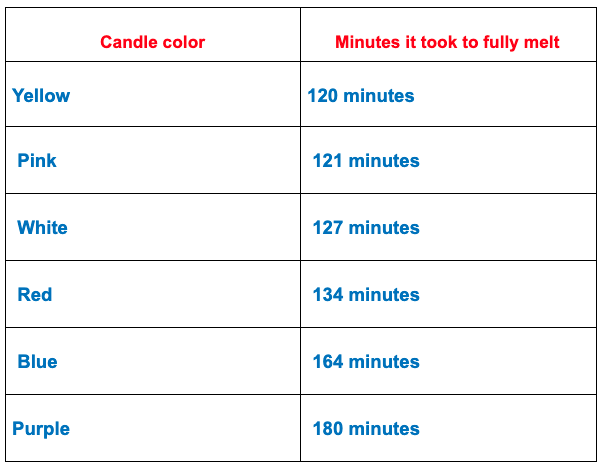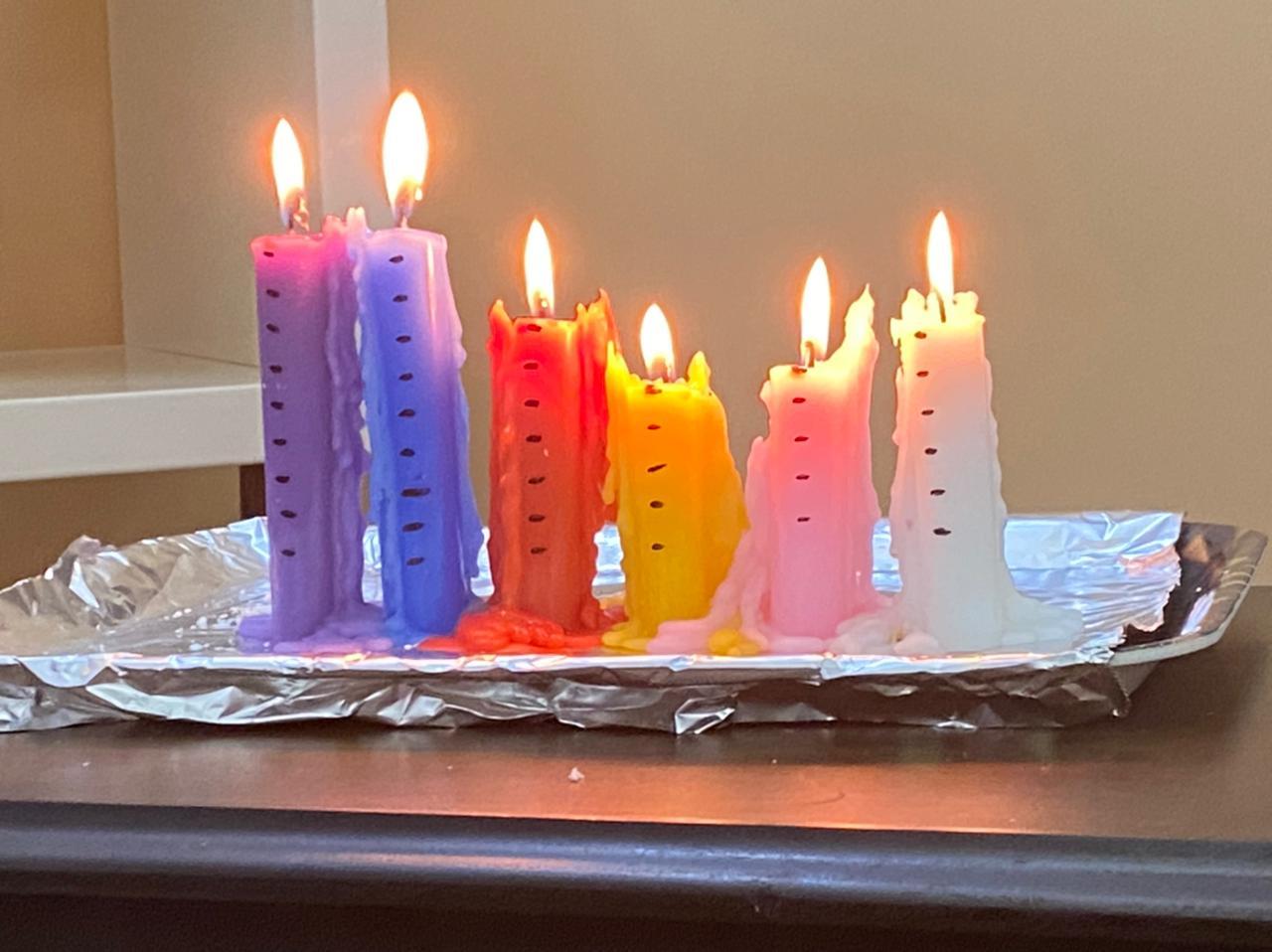Candles Color and Melting Rate
by ghadeeralhumood1 in Craft > Art
1836 Views, 1 Favorites, 0 Comments
Candles Color and Melting Rate

We are going to find out which colored candle lasts longer
Problem
Does the color of a candle affect how fast it melts?
Background Information
Lighter shades reflect more light, which is why this is the reason. Darker colors, rather than reflecting heat, absorb light better. Light is absorbed more easily by darker shades. Absorption will raise the temperature of a substance since light is energy.
Hypothesis
If the candle’s color is darker, then it will melt faster, because dark colors absorb a lot more heat than lighter ones.
Variables
Controlled: the mass and size of the candles
Dependent: the time it takes for the candle to melt
Independent: the color of the candle
Materials

6 colored candles (Purple, Blue, Red, Yellow, Pink, White)
Lighter
Timer
Procedure
1. Choose 4-6 different shades of candles with the same size
2. Light the candles and measure the time it takes to melt
3. observe how each candle melts and the differences between lighter and darker shades
4. Take down data
Data Table and Graph


Results
According to my experiments we concluded that, the darker the color, the longer it took to fully melt. There was an increase in the time needed for the candle to completely melt as the color got darker. The relationship between the candle’s color and melting time is a positive relation as both components increase in a direct relationship.
Conclusion

Our hypothesis was incorrect, we predicted that the darker colors would melt faster than the lighter ones, but when we conducted the experiment we saw that the lighter colors took a much shorter time to melt compared to the darker colors (example: the purple candle took 180 minutes to melt while the yellow candle took 120 minutes to melt). Through conducting the experiment and observing the collected data, we all came to the result; that candles with darker pigmentations melt relatively slow, while lighter candles melt significantly faster. That would be because the darker the color, the more ingredients are required to form the candle, which means that the darker color (more pigmentations) take longer to melt completely through. Candles generally consist of paraffin wax, beeswax, and some plant waxes. That's why lighter candles, with lighter pigmentations, require thinner materials, because the color can easily pay off. Darker pigmentation requires specific ingredients to make the color show through the wax, which makes them thicker. If you want a candle that will last long, and has a strong scent you should get a dark colored candle. But if you’re the type to forget to put out your candles, a lighter candle would be the way to go.